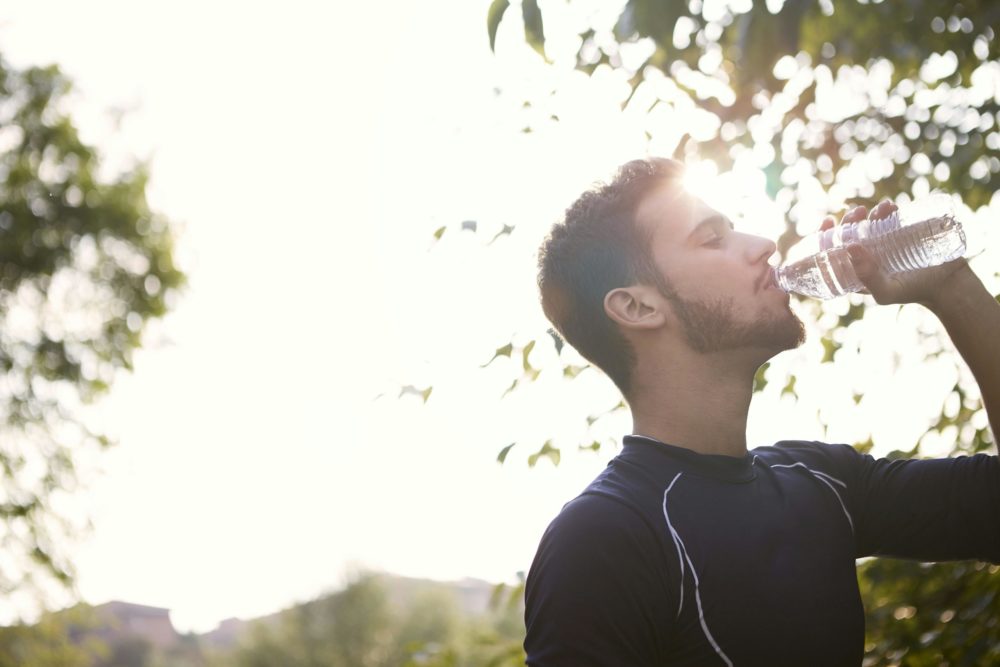Heatstroke is a pathological condition that can occur, usually in the summer, after prolonged exposure to the sun. During heatstroke (or hyperthermia as the medical term) the body produces or acquires more heat than it can control. In this case, body temperature may rise and fever may occur. Heatstroke occurs in tired people and especially in children (because the bones of their skull are thin) but also in the elderly. Symptoms vary from light to heavy.
Humans have the ability to maintain their internal temperature constant (36.8 +/- 0.4 degrees Celsius), with the help of thermoregulatory mechanisms. At high temperatures, the body exudes heat by limiting its burns, enlarging small vessels, increasing perspiration (sweating), and accelerating breathing. When due to prolonged exposure to the sun, the body’s homeostasis suffers fatigue, heatstroke occurs. It is due to the sensitivity of the brain to heat and is caused by the irritation of the meninges.
The symptoms
At heatstroke, the body overheats and produces more sweat than normal (body cooling). When the body is no longer able to produce the sweat required, the temperature begins to increase and fever occurs. The first symptom observed is redness of the skin. Other symptoms include nausea, fatigue, dizziness, weakness, cramps, confusion, nausea, vomiting, fainting, headache, cerebral dysfunction or urinary disorders.
Heatstroke can be light, medium or heavy. In light heatstroke the sufferer has a ringing in the ears, headache and nausea. In addition, the heart rate and breathing are accelerating, and eyes are widened.
When heatstroke is medium, the person has severe headache, weakness, and possible loss of consciousness (he may even be confused with people in his familiar environment). There might be nausea, vomiting, rapid breathing and rapid heartbeat. The chills and the feeling of being cold is something usual as well. It is often a feeling of fainting or dizziness. In some cases blistering occurs on the skin. There is general hypotension, vertigo, and fever (body temperature rises to 38-39 degrees Celsius.
In heavy heatstroke the victim loses his consciousness, his face becomes red and then pale. Seizures, hallucinations and delirium might occur. Sometimes there is inadvertent urination and defecation. There is high fever and body temperature can reach 41 degrees Celsius. If heavy heatstroke is not treated as soon as possible, brain damage might still occur.
High-risk individuals, except for young children and the elderly, are obese people, hypotensive people, malnourished people, those in poor physical condition, people taking certain types of medication such as anticholinergics, antihistamines, beta-blockers etc., and sufferers of certain medical conditions (eg heart failure, diabetes, stroke).
If you are a high-risk individual, avoid exposure to the sun during the sunniest hours from 10.30 to 18.00. Drink plenty of water, wear a hat, make lots of cool baths while staying at sea and avoid alcohol and heavy foods.
Treatment – First Aid
Symptoms usually last for an average of 2 days, and in order to recover faster, the best thing to do is to stay in a cool place, drink plenty of fluids, rest lightly dressed and if you are experiencing fever get an antipyretic drug. Still great help with relaxation, good sleep and cool compresses.
If you have symptoms of heatstroke, move away from the sun and place a cold cloth on your neck to reduce the body temperature. Then remove any unnecessary clothing (shoes, socks, etc.) and lie down with your legs placed a few centimeters higher than the rest of the body. If necessary, take a painkiller for the headache and in any case consume cold sugary liquids (preferably isotonic beverages). Visit the doctor if the symptoms last more than half an hour.
If your child has symptoms of heatstroke, you have to take it to a place with shade, remove its clothes and give it a cool bath or cool it, if you cannot bathe it, with wet towels. If it does not vomit, dissolve a teaspoon of salt in one kilo of water and give it to drink slowly (because sweat leaves the body). Do not give any fluids if your child vomits, or if he/she has nausea, drowsiness, decreased alertness. If blisters have occurred, contact a doctor immediately.

